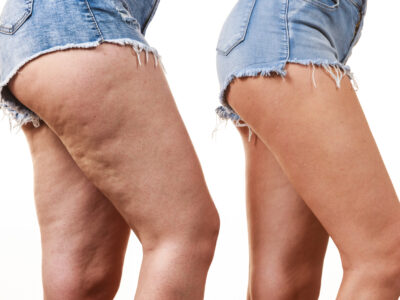What is obesity, Fat and Cellulite?

Diet and daily routines can often leave people with stubborn pockets of fat. Body contouring and body sculpting is all about helping you achieve your desired shape by losing inches around your waist and other body areas. Body contouring can target the pockets of fat and cellulite that have accumulated over a period of time and help you achieve your goals. Our body sculpting and body contouring system treats areas with stubborn fat that are resistant to diet and exercise. Read on to know more about fat and cellulite and non-invasive methods of improving your appearance.
Obesity, fat and cellulite
Obesity is a major challenge for many people across several countries including the US, and weight loss remains like an almost unachievable aspiration for many. As a result the treatment of fat has become one of the most rapidly growing fields of medicine. Excess fat not only poses cosmetic problems but it also has a significantly dangerous impact on people’s health.
Let us examine the non-invasive techniques to improve the appearance of cellulite and fat, and review the advantages and disadvantages of the different technologies. We must remember that many of these technologies are fairly new and their potential uses can only be validated through proper randomized scientific studies.
These devices should not be considered as ‘weight loss’ devices but rather as devices that bring about modest contouring. Any treatment of excess fat must include liposuction and lasers in conjunction with liposuction. However, these will not be discussed in this section as they are covered elsewhere in detail.
During the last decade, many new technologies have come up for the treatment of excess adipose tissue through non-invasive techniques. These devices use multiple techniques for improving the appearance of excess adipose tissue. They include a reduction in the overall volume of fat, improvement in the appearance of cellulite and skin tightening. However, liposuction is the true gold standard for treatment of excess fat. It is an invasive procedure and is associated with bruising, discomfort and downtime.
Cellulite vs. Fat

It is necessary to first understand the difference between cellulite and fat. Excess fat and obesity are an epidemic, the cause of which is poor diet and exercise. Fat is nothing but the deposit of excess, but structurally normal, adipose tissue.
Cellulite, is a hormonally-based structural phenomenon of adipose tissue that is more common among women than men. It is most common among post-pubescent women. Consequently, the methods adopted for the treatment of excess fat may not have any impact on the appearance of cellulite and vice versa.
Hormones are considered to have a significant role in the formation of cellulite. Estrogens stimulate lipogenesis and inhibit lipolysis, leading to adipocyte hypertrophy.
Cellulite is very common among post-pubertal women, but rare among pre-pubertal men and women of any age. It is even considered a secondary sexual characteristic of females and develops in at-risk areas because of less effective lymphatic and vascular circulation. However, it is not clear exactly how these differences cause the structural abnormalities of adipose tissue that results in the appearance of cellulite.
Studies on ultrasound and magnetic resonance imaging or MRI have shown the significant structural changes between male adipose tissue and female cellulite structure. The fibrous septae of the adipose tissue in the males, are arranged in an overlapping criss-cross pattern, providing greater strength to the overall scaffolding of the tissue and prevents herniation of the fat cells.
On the other hand, cellulite has fibrous septae arranged parallel to each other and perpendicular to the skin surface, making it weaker and allowing for focal herniation of adipose tissue. This focal herniation is considered to be the cause of the undulating, lumpy appearance of cellulite with fibrous septae that are parallel to each other, and has been observed through MRI.
Additionally, ultrasound, MRI and biopsies have shown that women with cellulite have a lumpy interface between the adipose tissue and the dermis, called the papillae adiposae, and contributes to the appearance of cellulite.
Whether excess adipose tissue contributes to the appearance of cellulite is not established. For example, thin females may have the appearance of
cellulite on their bodies, while some heavier females may not display any cellulite.
It is possible that excess adipose tissue exacerbates the cellulite but is not the only factor. Hence, excess fatty tissue and cellulite should be gauged as two distinct entities and treated accordingly.
Find out more by calling us at # 1-647-660-0860 or just send us an email to [email protected] and book a consultation right now at # 3630 Lawrence Ave E, Scarborough, ON M1G 1P6
